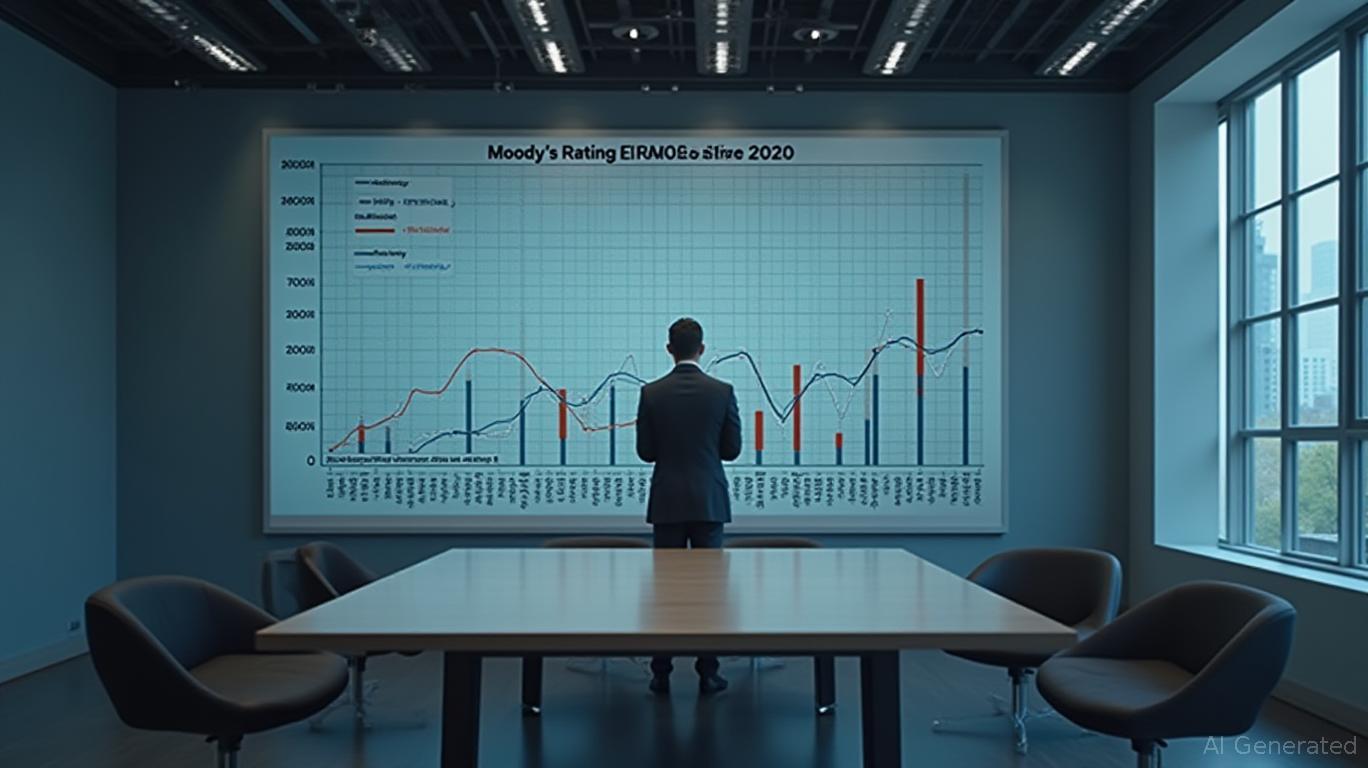Structuring Value in a Moody's-Altered Landscape: Navigating Global Credit Markets
The recent credit rating actions by
in Q2 2025 have reshaped the risk-return calculus for global investors, particularly in structured finance. The downgrade of the U.S. sovereign rating to Aa1, coupled with sector-specific outlook shifts, has created pockets of undervalued opportunities. For investors willing to parse these dynamics, the structured finance space offers compelling entry points—provided they navigate the interplay of geopolitical risks, fiscal trends, and sector-specific tailwinds.
The U.S. Downgrade: A Catalyst for Credit Market Repricing
Moody's decision to lower the U.S. rating to Aa1, marking the final major agency to strip the country of its AAA status, has elevated yield expectations for Treasuries. The 10-year Treasury yield now hovers near 4.6%, a level not seen since 2007, reflecting heightened risk premiums. While the stable outlook mitigates immediate panic, the downgrade has spurred capital reallocation.
Investors seeking higher yields may find structured products linked to U.S. assets, such as mortgage-backed securities (MBS) or asset-backed securities (ABS), particularly attractive. These instruments, which offer diversification beyond plain-vanilla Treasuries, could benefit from the Federal Reserve's likely pause in rate hikes. However, caution is warranted for overly leveraged sectors, such as energy or real estate, which may face valuation headwinds.
Sector-Specific Opportunities in Structured Finance
1. Global Chemicals: Riding the Volatility
Moody's negative outlook for the chemicals sector stems from trade disruptions and weak demand. Yet, this presents a tactical opportunity. Structured finance instruments tied to chemical firms with robust balance sheets—such as asset-backed commercial paper or receivables-backed notes—could offer asymmetric upside if trade tensions ease.
Focus on firms with exposure to China's clean energy pivot (e.g., lithium producers) or those benefiting from India's infrastructure boom. These sub-sectors may outperform as geopolitical dynamics stabilize.
2. Pharmaceuticals: Navigating Policy Risks
While Moody's revised the pharmaceutical sector's outlook to stable, U.S. drug pricing reforms and vaccine policy shifts remain risks. However, structured products linked to firms with diversified pipelines or strong R&D backlogs—such as royalty-backed bonds or securitized patent portfolios—could mitigate regulatory volatility.
Investors should prioritize issuers with Moody's SPOs (Second Party Opinions) validating their frameworks, ensuring compliance with evolving regulatory landscapes.
Regional Plays: India's Resilience and China's Tech Shift
1. India: A Structured Finance Oasis
Moody's highlights India's robust banks and domestic demand-driven growth. Structured finance products tied to India's infrastructure projects—such as toll roads, renewable energy, or housing—offer low correlation with global macro risks.
The auto sector's intense competition and slow electrification present another angle. Securitized auto loans or lease-backed bonds could benefit from India's growing middle class, even as EV adoption lags developed markets.
2. China: Transition Finance in Clean Energy
China's pivot to high-tech and renewables is reshaping global metals demand. Structured products linked to China's national oil companies (NOCs), such as project finance for offshore wind farms or lithium mines, offer exposure to a secular growth theme.
Favor instruments with NZAs (Net Zero Alignments), which validate adherence to decarbonization targets, reducing “greenwashing” risks.
The Structured Finance Edge: Where Value Meets Risk Management
Structured finance's ability to slice, layer, and hedge risks makes it ideal for today's uneven recovery. Consider the following strategies:
- Senior Secured Debt: Prioritize senior tranches in securitized products tied to India's infrastructure or China's renewables, where cash flows are contractually backed.
- Catastrophe Bonds (Cat Bonds): With geopolitical risks elevated, these instruments—which pool disaster risks—offer convexity in volatile markets.
- Transition Finance Instruments: Backed by firms with Moody's-validated sustainability frameworks, these can hedge against policy shifts in energy and healthcare.
Risks and Mitigants
- Geopolitical Volatility: U.S.-China tech rivalry could disrupt supply chains. Diversify exposures across regions and sub-sectors.
- Interest Rate Sensitivity: While falling rates support structured finance, monitor the Fed's stance.
- Credit Downgrades: Monitor issuers with high leverage; favor those with strong liquidity or government support.
Final Investment Thesis
The Moody's downgrades and sector outlooks have created a fragmented credit landscape. Structured finance, when paired with rigorous risk analysis, offers a path to capitalize on mispriced assets. Prioritize:
1. India's domestic growth story through infrastructure-linked instruments.
2. China's clean energy transition via project finance with NZAs.
3. Pharma firms with diversified revenue streams and SPO-backed frameworks.
Avoid overexposure to chemicals and energy without exposure to secular tailwinds. In this environment, structured finance isn't just a niche—it's the new frontier for disciplined, value-driven investors.


Comments
No comments yet